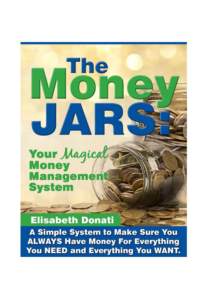They say it isn’t a bailout … but it is.
They say it is necessary to keep Main Street alive … and they are right.
THE PAULSON BAILOUT GOES THROUGH CONGRESS
Last week, I sent an email blast telling everyone to contact their congressional leaders asking them to slow down on the bailout. Every survey I saw showed the American public against Hank Paulson’s plan by a huge margin (9 or 10 to one in most cases). In fact the plan had an approval rating that was lower than Congress! I didn’t think that was possible.
We are not done yet. While this is being voted on, it isn’t set in stone.
Wall Street is down this morning – that can either be because they don’t like the plan or because they don’t like uncertainty … or both. I vote for the combination. There are significant problems with the bailout and the repercussions. There is also significant uncertainty over what will eventually get passed.
SOME KIND OF ACTION IS NEEDED
In case you hadn’t picked up on this – I am a free market enthusiast. I believe that government intervention almost always creates waste and makes a situation worse in the long run than letting the market work through the problem. I also believe that the problems we are facing today were created by government agencies and meddling in the first place.
That said – something needs to get done because if we muddle along too long we risk the significant chance of a completely destructive crash of the system – something that could create irreparable damage to the world economy, not just our own.
QUICK SUMMARY
There are lots of bad loans on the books of most banks and many other corporate entities. They are often in the form of complicated derivatives – financial instruments where it is not easy to discriminate between the good ones and the bad ones. In addition, these derivatives are often piggy-backed on top of other different-but-equally-complicated financial instruments.
While these instruments will wreak havoc on many corporate financials, the primary concerns are those derivatives held by banks and lending institutions. As we identify this “toxic waste,” each bank’s balance sheet looks worse and worse by the day depending on their exposure to it.
Today, we not only have many banks which are technically insolvent (as they write this toxic waste off their balance sheet), the cash they spend to remain solvent from a bookkeeping standpoint is cash they can no longer lend to businesses and consumers. They also can’t borrow money to lend because of ratings downgrades and their weaker balance sheets.
A number of times in the past few weeks, banks have found themselves unwilling to lend to each other, much less anybody else – because everybody knows that everybody else holds some of this toxic waste in their portfolio. So everybody is a bad risk.
This is an extremely dangerous position for the economy to be in.
THE PURPOSE OF THE GOVERNMENT INTERVENTION
I am refraining from calling the ultimate solution a bailout, because if it were done right it SHOULDN’T BE a bailout. It is only an intervention. Whoever owns toxic waste must deal with their problems and resolve them rather than just selling them to the taxpayer.
The purpose of the intervention is to free up liquidity so that businesses can continue to operate and the economy can continue to function. This will add faith to our banking system which will keep foreign investment dollars here in the US rather than have those trillions of dollars be moved into other countries and financial systems – an act that would be devastating.
AVOID THE MORAL HAZARD
This is probably the key point underlying all of my blog posts the past three weeks. We got to this point because of a moral hazard that was promoted by our government in the form of excess liquidity by the Fed, aggressive lending programs by Fannie Mae and Freddie Mac and massive leverage within the already-highly-regulated banking industry.
It is this moral hazard that has promoted over-leverage by American consumers and companies and unrealistically high market prices for real estate and financial institution stocks.
These excess values have led to more leverage which have, in turn, led to even greater share prices and home values creating a seemingly-never-ending upward spiral. This is what a bubble is. This is what we are dealing with. Now the cycle is broken and there is a lot of pain to be felt as values retreat to sustainable, intrinsic levels.
The new program/intervention which I believe has to come from the federal government MUST make every effort to avoid creating new moral hazards – moral hazards which would mean more asset bubbles and greater catastrophe in the future.
Unfortunately, the Hanky-Panky bailout (the Paulson proposal going through Congress) creates whole new layers of moral hazard and incentives for more poor choices in the future.
WHERE IS THE MORAL HAZARD?
If you are a bank or corporation and you got yourself in trouble by buying an investment asset that ended up losing money, under normal circumstances you would report the loss and take the hit as your stock price goes down. You would lose some of your investors and stockholders. As a company you might survive … or you might go out of business. If you used leverage (borrowing) to make this investment, you increased the potential to make gains on your investment, but you also increased the downside which could make a small loss turn into a huge loss.
If, however, after making a horrible decision made worse by a lot of leverage – the government came in and said, “Hey that’s OK, we want to help you so we’ll take your crappy investment off your books and give you more than it is worth in cash.” Now your crappy investment turns out to be not so crappy – in fact you may have ended up profiting from it (and profiting a lot if it was heavily leveraged).
What’s to stop you from continuing your behavior in the future?
You’ll keep looking for risky investments figuring that if you make money, you get to keep it. If you lose money, someone will come in and save your butt. That was the essential flaw in the Fannie Mae and Freddie Mac situation – profits were privatized, losses were nationalized.
NOW AMPLIFY THAT HAZARD BY 1000
In essence that is what a $700 billion bailout does. It takes the moral hazard of condoning activity which has brought us to the brink of disaster and then puts the downside cost on the backs of future generations while giving upside to the thousands of companies that made terrible choices over the past 10-15 years.
Nobody learns anything. “No pain, no gain!” as Richard Simmons used to say.
We sow the seeds for the next mother-of-all asset-bubbles AND we bury future generations’ prosperity with more debt, uncontrollable inflation and a banking system in which foreign investors have no faith.
No good comes out of a massive bailout – except to the relative few who get bailed out and the politicians who get elected into office by burdening our grand-children and saving us the pain of an important learning experience.
WHAT WE NEED TO GET FROM ALL OF THIS
1) As a society, we should be more self-reliant. History is riddled with countries that tried to spend their way out of a jam whether they were socialist, communist or free market. It never works. I don’t believe that counting on government (especially one that also spends more than it makes) to bail us out solves any of our problems.
2) Transparency – The more we know about what is going on with a company and their balance sheet, the better. Some people propose that regulation provides this transparency. That has not been my experience. Regulation usually creates ways for insiders to obfuscate the truth and protect themselves from competition. That is a topic for a different post.
3) Responsibility – We all need to take responsibility for our money. If a company has toxic waste on their books – they need to figure out how deal with it. They should write it off and take the loss. They should not be able to show a profit that isn’t there and/or pawn it off on the US taxpayer. If a person bought a house they cannot afford, they shouldn’t be in that house.
4) Liquidity – for reasonable loans (the kind that used to be underwritten before all this started). Cash needs to be available at a reasonable cost so that businesses can continue to operate and people can continue to live their lives.
AN ALTERNATIVE
The GOP offered an insurance alternative to the Paulson plan. Nice. Cute. I don’t see how it will work. It still creates all kinds of moral hazard especially as far as the responsibility quotient is concerned.
I am fascinated with the solution used in Chile in the early 80’s. In this situation, the government loaned money to the banks. This provided cash and liquidity to the system. All loans were collateralized by the bad debt. Any company borrowing this money would be required to keep the toxic waste on their books and to write it off over time as it matured. This keeps the company honest about their responsibility for the debt and improves transparency within the market. Any company with one of these loans on their books cannot distribute profits to their shareholders (or pay incentives to executives) until this loan is paid off. This gives an incentive to the borrower to resolve the issue as fast as possible using their own resources.
The biggest advantage to the Chilean solution is that the US taxpayers can actually benefit from it. It minimizes our exposure to losing the money (some companies will not survive and the collateral on the loan may not be worth a whole lot, but that is only a percentage of those who participate). It takes government out of the role of hedge fund (which is what it becomes if we start buying this toxic waste – especially at “above market” prices) and puts it into the roll of market maker and liquidity resource.
The US House of Representatives just shot down the $700 billion bailout … There is still time for a more reasonable alternative. Fax your letters to your representative today. Tell them they will not get back into office if they vote for the bailout – you do not want to burden your kids with this bill.
SOME BOLD PREDICTIONS FOR THE FUTURE
Housing prices are not done going down. They will continue to drop until values have retreated at least to the point of historical intrinsic value. Historically real estate values grow at a rate equal to inflation plus productivity improvements. That translates to about 4.5% over the past 50 years. In order to get back to that trend-line, real estate values nationally need to drop another 15-25% (depending on your location and how you calculate the trend-line). In these cases, prices ofter retreat PAST the historical norm like a pendulum goes past its resting point.
If we get prices to stop falling now (maybe down only another 3-5%), then expect home values to stay flat with no increases for years if not decades. The key is to get back to the trend-line. With great certainly I can predict that this will happen. I cannot predict the path by which it will happen.
Financial Firms aren’t done losing value. There is a lot of toxic waste. Thanks to the obfuscation which comes with regulation, we don’t even know how bad the problem really is. Banks are also pretty highly leveraged institutions – the equivalent of 90% loan to value so the balance sheets of these firms will get whacked even more as we uncover all of the exposures. Expect huge losses and market values to end up at 10-30% of their peaks a year ago.
We will see a recession before this is done. This is the one that kills me. I hate recessions as people go through knee-jerk reactions to the situation and stop spending money even when the expense is for something that can truly add to their quality of life today. I just don’t see how falling home prices, falling financial stock investments and the unravelling of all this leverage can happen without consumers spending less – and maybe for a long time (2-3 years). There is a sea-change that has to happen regarding spending and saving. That requires a time out from growth.
If tax rates go up in 2009, it will kill the economy. The middle class – and especially the entrepreneurial middle class – are the keys to getting this country out of this mess. If you punish them with higher taxes it is likely that the US economy will never recover in this global financial world.
Now More Than Ever – Financial Literacy is Critical. The events of the past few weeks and the challenges we face in just getting Americans to understand the basics of what is going on – all lead me to conclusion that financial literacy is critical. Everybody must understand how their money works. We all need to know how leverage can help you and how it can hurt you. Pandering and demagoguery are rampant in Washington DC. It gets votes which then are translated into programs that spell disaster for us economically as a nation.
Take classes. Read books. Participate in an ongoing dialog about money. Don’t take what Hank Paulson, Ben Bernanke, President Bush or even John Buerger says without asking questions and getting your arms around the concepts.
For more information on John Buerger and to read more of his wise writing, visit his Rich and Fullfilling website and as John reminds us all…
Get Control Over Your Money… Before it Takes Control of Your Life!
John D. Buerger, CFP®
Wealth Coach
jdbuerger@altuswealth.com
www.RichAndFulfilling.com
ALTUS Wealth Solutions
3211 Broad Street, Suite 201
San Luis Obispo, CA 93401
805-476-0333 (office)
If someone sent you this article and you’d like to read more interesting tips, trick and philosophy on money and life, sign up today for Elisabeth’s FREE Weekly E-Zine, Financial Wisdom with a Twist and FREE monthly teleseminars at UltimateAllowanceBook.com.




0 Comments